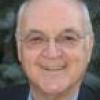Over the next several days three exemplars of Christian discipleship -- two of whom have been formally canonized as saints and the other, beatified -- will be commemorated on the Proper Calendar for the Dioceses of the U.S.A.
One of the three is a woman, the first American-born saint. Elizabeth Bayley was born into a devout and well-to-do Episcopalian family in 1774. Her father was a well-known physician.
At age 20, Elizabeth married a wealthy businessman, William Magee Seton. After giving birth to five children, Elizabeth Ann Seton became involved in social work, establishing the Society for the Relief of Poor Widows with Children, earning the epithet the “Protestant Sister of Charity.”
When Mr. Seton’s shipping company went bankrupt and he contracted tuberculosis, he took his wife and oldest daughter to Italy in search of a sunnier climate. He died soon after the long voyage.
Inspired by a kind Italian family, Elizabeth became a Catholic in 1805. Her nephew, James Roosevelt Bayley, also later became a Catholic and then archbishop of Baltimore in 1853.
Rejected by her family and friends, Elizabeth founded a boarding house for schoolboys in New York and performed other assorted jobs to supplement her now-meager income.
When the rector of St. Mary’s Seminary in Baltimore learned of her plight, he invited her to establish a school for girls in the city. Elizabeth did so in 1808, and the following year founded a small religious community, which came to be known as the Daughters of Charity of St. Joseph. She subsequently established a school for poor children near Emmitsburg, Maryland.
Her community’s Rule was approved by the famous Bishop John Carroll of Baltimore, and Elizabeth was elected its first superior. She was thereafter known as Mother Seton.
When she died in 1821, there were 20 of her communities in existence throughout North and South America, and in Italy. Everywhere they went, her sisters opened schools and orphanages.
Mother Seton was beatified by Pope John XXIII in 1963 and canonized by Paul VI in 1975. The latter held her up as an example of how one can live an authentically spiritual life in the midst of material prosperity. Her feast is celebrated Jan 4.
The following day is the feast of another North American saint, John Nepomucene Neumann, the fourth bishop of Philadelphia.
Born in Bohemia of German and Czech parents, he worked as a diocesan priest with German-speaking immigrants near Niagara Falls. However, after four years of ministering alone, he yearned for community life and joined the Redemptorists.
He became a popular preacher among immigrant congregations in Pittsburgh and Baltimore, and was eventually appointed vicar of all Redemptorists in the United States. In 1842 he was named bishop of Philadelphia, thanks in large measure to the sponsorship of his friend and penitent, Francis Kenrick, archbishop of Baltimore and himself a former bishop of Philadelphia.
Bishop Neumann built some 100 churches and 80 schools in the diocese, completed construction of the cathedral, and founded a congregation of women to help staff the increasingly crowded parochial schools. He also wrote two German catechisms that were approved by the First Council of Baltimore in 1852 and widely used in the United States for the rest of the century.
John Nepomucene Neumann was only 48 when he died suddenly on a Philadelphia street in 1860. His funeral was attended by throngs of people. He was beatified by Pope Paul VI in 1963, and canonized 14 years later.
Brother André Bessette’s feast is celebrated on the day after Bishop Neumann’s and two days after Mother Seton’s. He was born in a Canadian village in 1845 and baptized as Alfred. By the age of 12, both of his parents had died. He had little choice except to choose work over education.
A decade later he moved to the United States where he labored in various manual occupations, but after three years he returned to Canada and joined the Brothers of Holy Cross. He was given the religious name André.
For some 40 years thereafter he served as janitor, porter, infirmarian, and in other similar capacities at the College of Our Lady of the Snows near Montreal. At age 60 he was transferred to the city itself where he founded and helped build the Oratory of St. Joseph, the saint to whom he had a special devotion.
The oratory soon became a place of pilgrimage and so many cures were attributed to Brother André that he became known as the “Miracle Man of Montreal.”
When he died on January 6, 1937 at age 91, over a million mourners paid their respects.
© 2008 Richard P. McBrien. All rights reserved. Fr. McBrien is the Crowley-O’Brien Professor of Theology at the University of Notre Dame.




